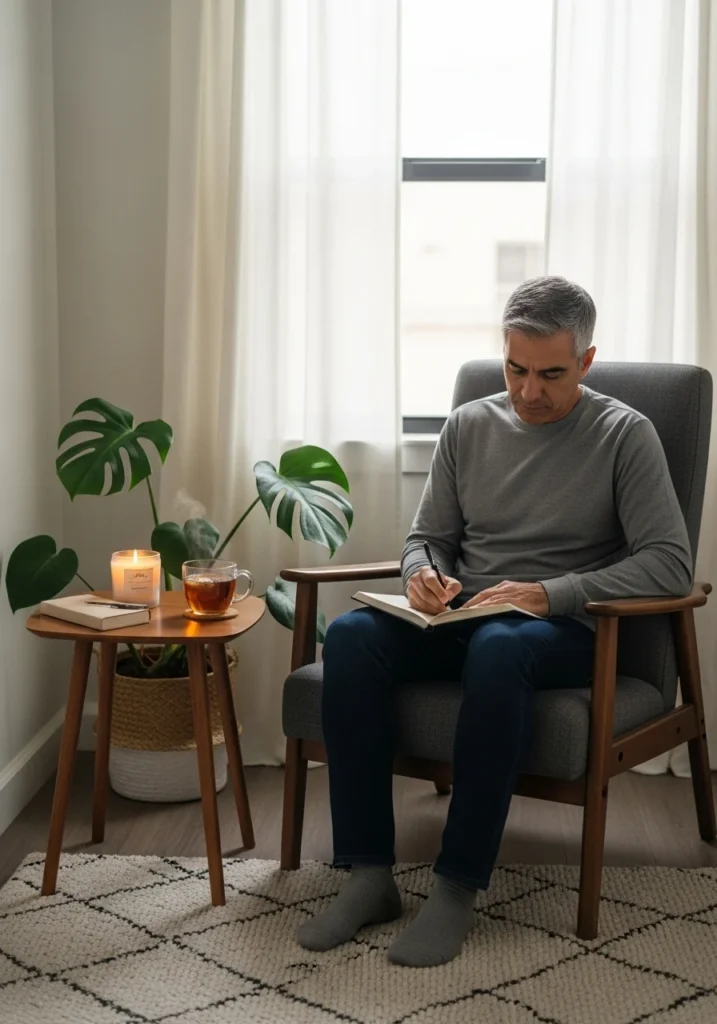Introduction
In today’s fast-paced and consumer-driven world, many individuals are feeling overwhelmed by the constant pressure to buy more, own more, and do more. This has led to a growing interest in minimalist living—a lifestyle that encourages simplicity, intentionality, and clarity. If you find yourself drowning in clutter, feeling mentally exhausted by chaos, or simply seeking a more meaningful life, adopting minimalist principles may be the change you need.
This comprehensive guide explores the essence of minimalist living and offers practical, actionable tips to help you get started. From decluttering your home to shifting your mindset, you’ll learn how to live with less while gaining so much more—more time, more freedom, and more peace of mind. Whether you’re taking your first step into minimalism or you’re looking to deepen your current practice, these strategies will help you build a lifestyle that aligns with your values, reduces stress, and promotes long-term well-being.
We’ll cover everything from how to declutter your physical space to digital minimalism, mindful spending, and creating routines that support a minimalist lifestyle. With a focus on sustainability, organization, and mental clarity, this guide will not only help you simplify your surroundings but also enrich your everyday life. Ideal for anyone seeking a more intentional way of living, this post is packed with expert insights, step-by-step advice, and inspiring ideas to help you embrace minimalism and thrive in a world that constantly demands more.
Whether you’re simplifying a single room or committing to a full lifestyle overhaul, this blog post will serve as your roadmap to a more focused, fulfilling, and clutter-free life.
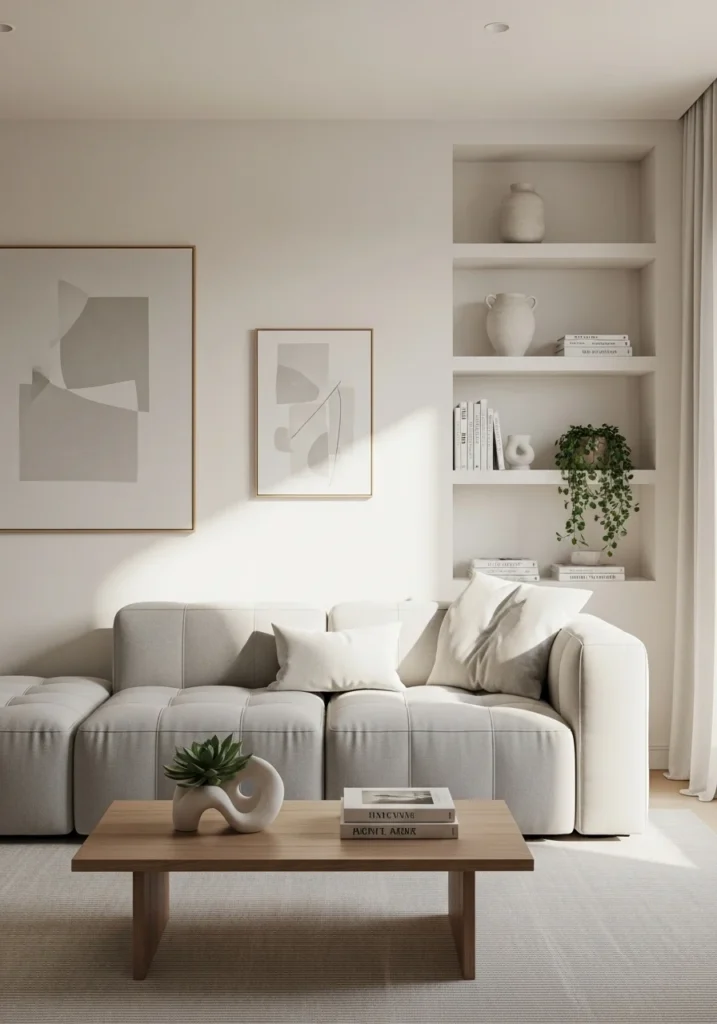
What Is Minimalist Living?
Minimalist living is more than just a visual aesthetic—it’s a lifestyle rooted in intentionality, clarity, and purpose. At its core, minimalism means choosing to live with only the things that truly add value to your life. It’s about focusing on what matters most by eliminating physical, mental, and emotional clutter that can distract you from living fully and authentically.
When people hear the word “minimalism,” they often imagine stark white walls, empty shelves, or a life without any comforts. But in reality, minimalist living doesn’t require you to get rid of everything or live in a bare, joyless space. Instead, it encourages you to evaluate your possessions, habits, and daily choices to determine what is truly meaningful. Do your belongings support your goals, reflect your values, or bring you peace? If not, it might be time to let them go.
Minimalist living creates space—not just physically, but mentally and emotionally as well. By reducing the noise and excess in your life, you open up room for clarity, mindfulness, and deeper relationships. You start to notice what truly brings you joy: maybe it’s spending time with loved ones, engaging in creative hobbies, focusing on your health, or simply enjoying quiet moments.
This lifestyle also promotes sustainability and conscious consumption. Instead of impulse buying or accumulating things just for the sake of ownership, minimalists prioritize quality over quantity. They invest in items that last, experiences that enrich, and routines that restore balance.
Whether you’re simplifying your home, your digital world, or your daily schedule, minimalist living invites you to ask an essential question: Does this serve a purpose in my life? If the answer is no, then minimalism gives you permission to let it go—freeing you to live more intentionally, peacefully, and meaningfully.
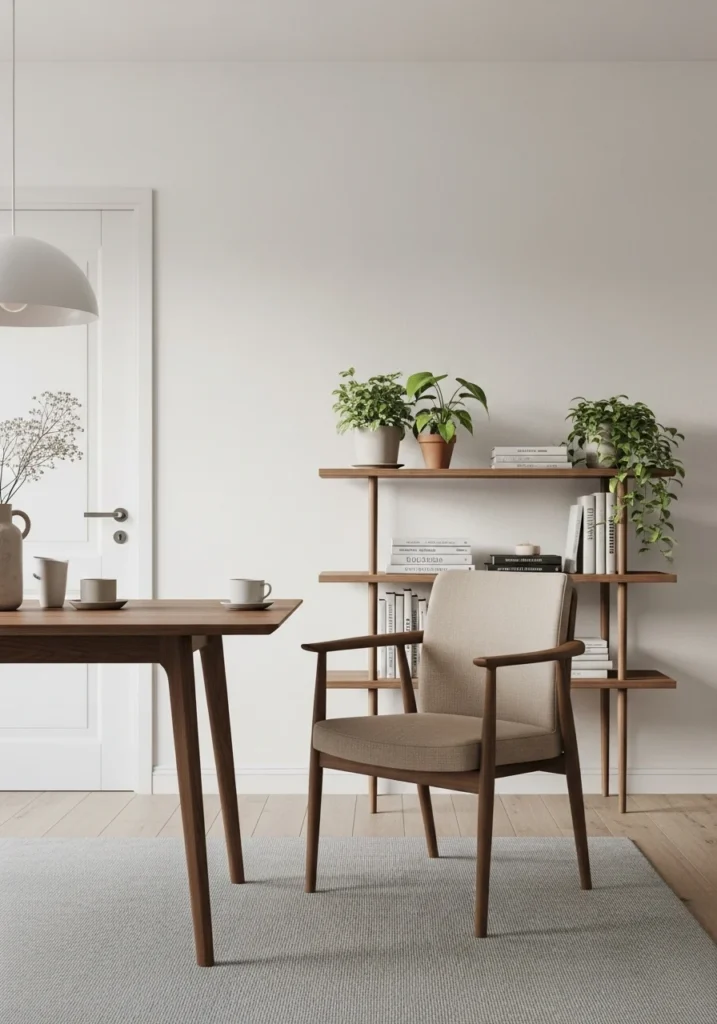
Benefits of Minimalist Living
Adopting a minimalist lifestyle comes with a wide range of benefits that extend far beyond having a tidy home. Minimalism simplifies your physical surroundings, but its true power lies in how it transforms your mindset, habits, and overall quality of life. When you begin to live with intention—keeping only what adds value and removing the rest—you naturally create space for personal growth, peace, and purpose.
1. Less Stress and Mental Clarity:
A cluttered environment can lead to anxiety, overwhelm, and mental fatigue. When your surroundings are filled with unnecessary items, your brain constantly processes visual noise, which can make it difficult to relax or concentrate. Minimalist living eliminates this by creating calming, organized spaces that promote mental clarity and emotional well-being. A clear space often leads to a clear mind, allowing you to focus on what really matters.
2. More Free Time:
The less you own, the less time you spend cleaning, organizing, repairing, or maintaining those possessions. Instead of spending weekends decluttering closets or rearranging shelves, minimalists gain valuable hours to enjoy meaningful activities—whether that’s spending time with loved ones, pursuing hobbies, or simply resting. Minimalist living gives you the gift of time.
3. Financial Freedom:
When you stop spending on unnecessary items and start making mindful purchasing decisions, you naturally save money. Minimalists are more intentional with their spending, prioritizing needs over wants and quality over quantity. This shift in mindset often leads to less debt, increased savings, and a healthier relationship with money. Over time, minimalist living can lead to true financial independence.
4. Positive Environmental Impact:
Minimalism also aligns with eco-friendly values. By consuming less, reusing more, and buying only what’s necessary, you reduce your carbon footprint and contribute less to landfills. It promotes sustainable living by encouraging quality, durable goods and discouraging fast fashion, single-use plastics, and other wasteful habits. Living minimally is not just good for you—it’s good for the planet.
5. Increased Focus and Productivity:
A minimalist lifestyle fosters greater focus and mental discipline. Without the distractions of clutter and chaos, you can better concentrate on your goals, whether personal or professional. A clean and intentional space boosts creativity, productivity, and motivation—especially in work-from-home setups or creative environments.
In short, the benefits of minimalist living ripple through every area of life. It’s not about depriving yourself—it’s about making room for what truly matters. Whether you want to reduce stress, save money, live sustainably, or simply feel more in control of your life, minimalism offers a path to greater freedom and fulfillment.
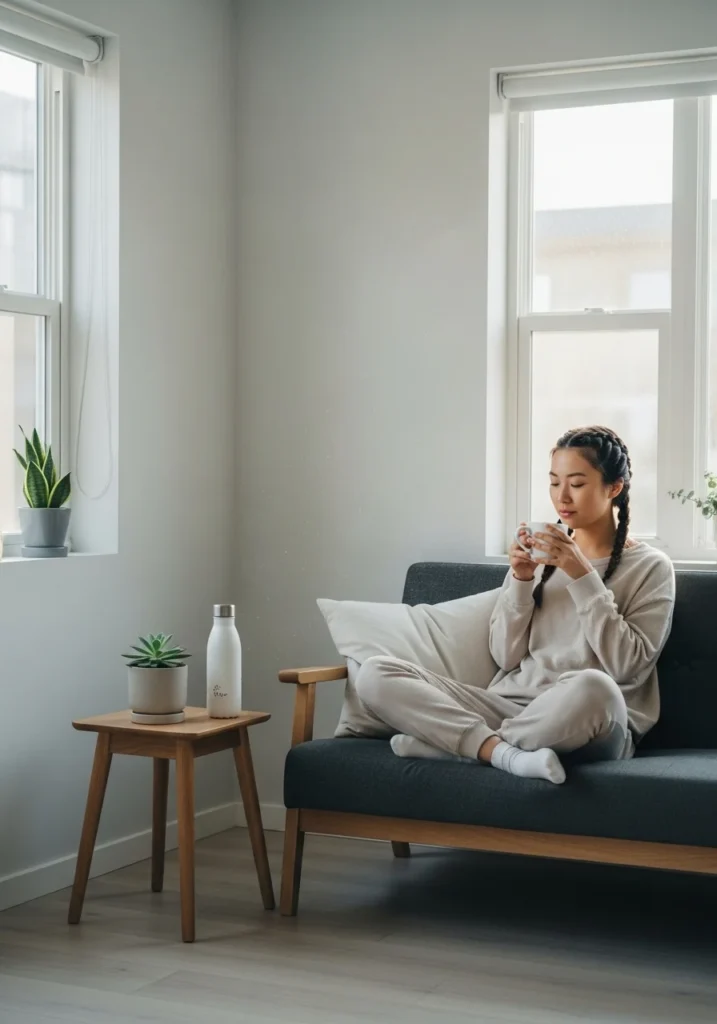
How to Start a Minimalist Lifestyle
Starting a minimalist lifestyle may seem overwhelming at first, especially if you’re surrounded by clutter and unsure where to begin. But the beauty of minimalism is that it doesn’t require you to make drastic changes overnight. Instead, it’s about taking thoughtful, consistent steps toward a simpler, more intentional life. By starting small and focusing on your personal goals, you can gradually build a lifestyle that is aligned with your values and free of unnecessary distractions.
Here’s a step-by-step approach to help you start your minimalist journey:
Step 1: Define Your “Why”
Before you organize a single drawer or donate a single item, take a moment to understand why you want to embrace minimalism. Are you tired of living in a chaotic home? Do you want more time with your family or to reduce your financial stress? Are you feeling mentally drained from constant clutter and consumer pressure? Your personal “why” serves as a compass that will keep you grounded when decisions get tough. Writing it down can also help you stay motivated as you move through the process.
Step 2: Start with Small Areas
Minimalism doesn’t require a massive home makeover right away. In fact, trying to tackle your entire space in one go can lead to burnout. Instead, begin with a manageable area—a single drawer, one corner of a room, or a specific shelf. These small wins build confidence and create momentum. As you begin to see progress in one area, you’ll feel inspired to take on more.
Step 3: Eliminate Duplicates
Most homes are filled with duplicates we rarely use—extra kitchen gadgets, multiple hairbrushes, stacks of notebooks, or piles of similar clothes. Choose the best version of each item and let go of the rest. Do you really need three sets of measuring cups or five water bottles? Minimalism isn’t about having nothing—it’s about having just enough. Eliminating duplicates can free up valuable space and simplify your daily routines.
Step 4: Apply the One-In, One-Out Rule
To maintain your progress and avoid slipping back into old habits, adopt the “one-in, one-out” rule. For every new item you bring into your home, let one existing item go. This practice encourages mindful consumption and keeps clutter from returning. Over time, this rule helps you become more selective and intentional about your purchases, reducing impulse buying and accumulation.
Step 5: Digitize What You Can
Paper clutter is a common issue in many households—old receipts, bills, documents, and photos can pile up fast. Go digital where possible. Scan important documents and back them up securely. Store family photos in organized digital albums. Even decluttering your email inbox and unsubscribing from unnecessary newsletters can have a huge impact on your mental clarity. Digital minimalism is just as important as physical minimalism in today’s tech-driven world.
Starting a minimalist lifestyle doesn’t require perfection—only progress. With each thoughtful decision, you move closer to a life that feels lighter, freer, and more intentional. Whether your goal is to create a peaceful home, manage your finances better, or simply feel more in control of your time and space, these simple steps are the perfect starting point.
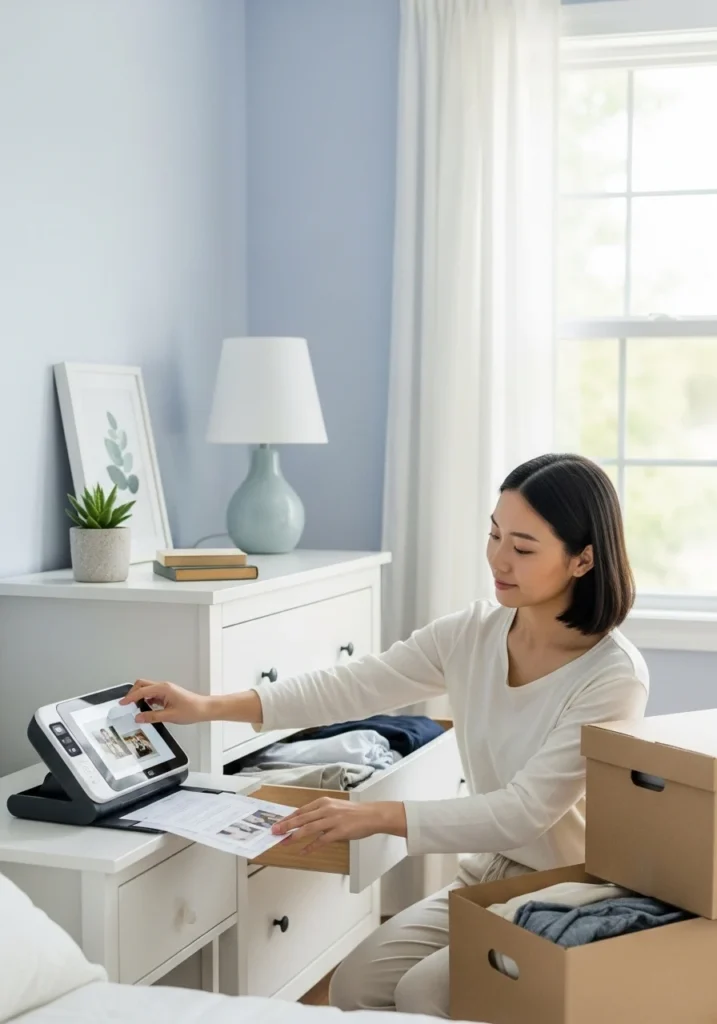
Minimalist Home Organization Tips
A minimalist home isn’t just about having fewer things—it’s about organizing your space in a way that promotes clarity, function, and peace of mind. Minimalist home organization goes beyond decluttering; it’s about creating an environment that supports intentional living and eliminates the daily stress of disorder. Whether you’re living in a small apartment or a spacious house, these minimalist home organization tips will help you make the most of your space while keeping it calm, clean, and purposeful.
Use Clear Storage Bins
Transparent storage bins are a minimalist’s best friend. They allow you to see exactly what’s inside without having to open multiple boxes or drawers, which saves time and prevents unnecessary searching. Clear containers also encourage you to keep only what’s truly needed, as visual clutter becomes immediately obvious. Label bins for added efficiency, especially in kitchens, closets, and garages.
Limit Furniture to What’s Necessary
In a minimalist home, every piece of furniture should serve a purpose. Instead of crowding your space with excess chairs, shelves, or decorative pieces, focus on keeping only what is functional and essential. This doesn’t mean your home needs to be sterile or boring—it simply means selecting items that support your lifestyle while leaving plenty of open space for movement and breathability. Multi-functional furniture (like storage ottomans or nesting tables) is especially useful in minimalist interiors.
Declutter Flat Surfaces
Flat surfaces such as countertops, desks, nightstands, and coffee tables tend to attract clutter quickly. Keeping these areas mostly clear can instantly make your space look more open and serene. Store items in drawers or designated bins instead of leaving them out in the open. A clean surface not only looks better but also helps reduce mental overwhelm.
Adopt “Zone Living”
To stay organized, divide your home into intentional zones—each with a clear purpose. For example, your living room might be for relaxing and reading, while the kitchen is for cooking and eating. Assigning a purpose to each space helps you decide what items belong there and which do not. Zone living creates natural boundaries, simplifies decision-making, and prevents clutter from spreading across your home.
Pro Tip: Every Item Should Have a Home
This is one of the golden rules of minimalist organization. If an item doesn’t have a designated spot where it lives, it probably doesn’t belong in your space. When every item has a home, it’s easier to clean up, stay organized, and avoid clutter buildup. This habit also encourages intentionality—if you’re unsure where something should go, ask yourself whether it truly serves a purpose in your life.
Organizing your home the minimalist way isn’t about perfection—it’s about creating an environment that feels supportive, peaceful, and aligned with your values. By combining functional storage, intentional design, and consistent habits, you’ll transform your home into a place that’s both beautiful and incredibly easy to maintain.
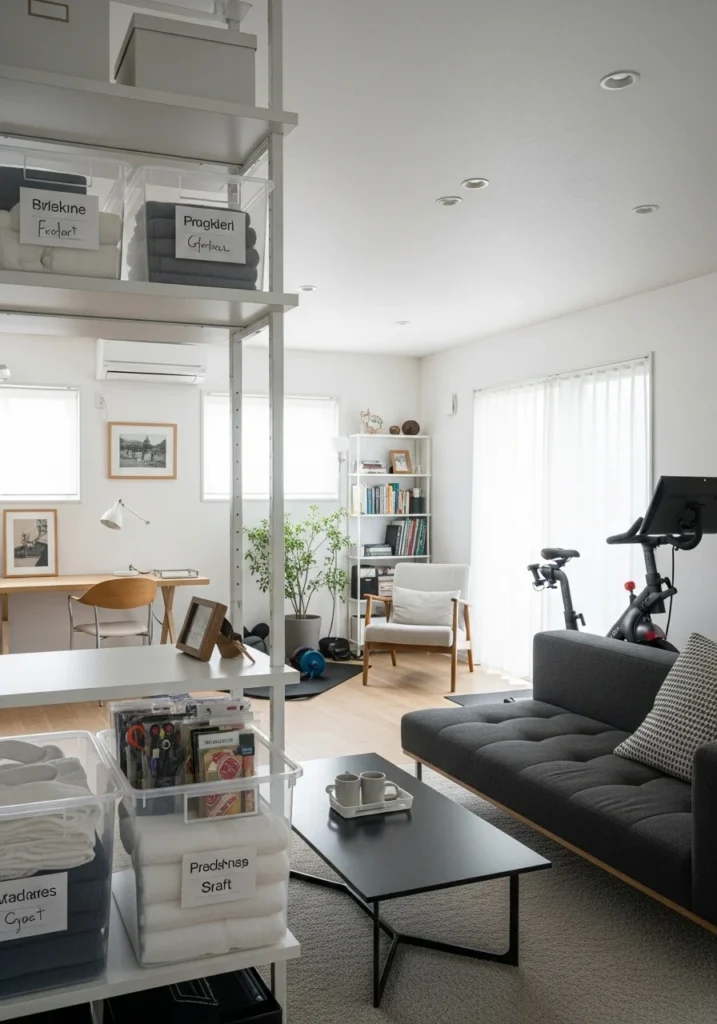
Mindful Shopping Habits
A key part of maintaining a minimalist lifestyle isn’t just about what you get rid of—it’s about what you choose to bring in. Practicing mindful shopping habits is one of the most powerful ways to prevent clutter from returning and to stay aligned with the minimalist mindset. Rather than making purchases based on trends, emotions, or convenience, minimalism encourages thoughtful consumption rooted in intention and awareness.
Before buying anything, it’s important to pause and ask yourself a few essential questions:
- Do I really need this?
This simple question can instantly filter out impulse purchases. If the item isn’t solving a problem, fulfilling a genuine need, or adding clear value to your life, it’s likely not worth buying. Minimalism promotes owning less—not for the sake of deprivation, but to ensure that everything you do own serves a purpose. - Is it high quality and built to last?
Choosing well-made, durable items over cheap, disposable alternatives is a cornerstone of mindful consumption. While high-quality products may cost more upfront, they tend to last longer and perform better, ultimately saving you money and reducing waste. In a minimalist lifestyle, quality always wins over quantity. - Will I still want this in 6 months?
This question encourages you to think long-term. Many purchases feel exciting in the moment but quickly lose their appeal. By imagining whether an item will still serve you down the road, you can avoid filling your space with things that quickly become forgotten or unused. - Am I buying this out of boredom, stress, or emotion?
Emotional shopping is a common habit, especially in today’s world of one-click purchases and endless sales. Whether it’s retail therapy after a hard day or buying something just because it’s on sale, emotional spending often leads to regret and clutter. Mindful shopping means recognizing your triggers and learning to sit with your feelings instead of numbing them with material items.
Delaying Gratification Is Powerful
Minimalists often practice the “wait rule”—waiting 24 hours (or even 30 days) before making a non-essential purchase. This delay helps you distinguish between impulse wants and genuine needs. If you still want the item after the waiting period, it may be worth considering; if not, you’ve saved both money and space.
Make Lists and Stick to Them
Another useful strategy is to create a shopping list before entering a store—whether online or in person—and stick to it. Avoid browsing for entertainment. When you shop with purpose, you’re far less likely to make spontaneous decisions that lead to clutter or buyer’s remorse.
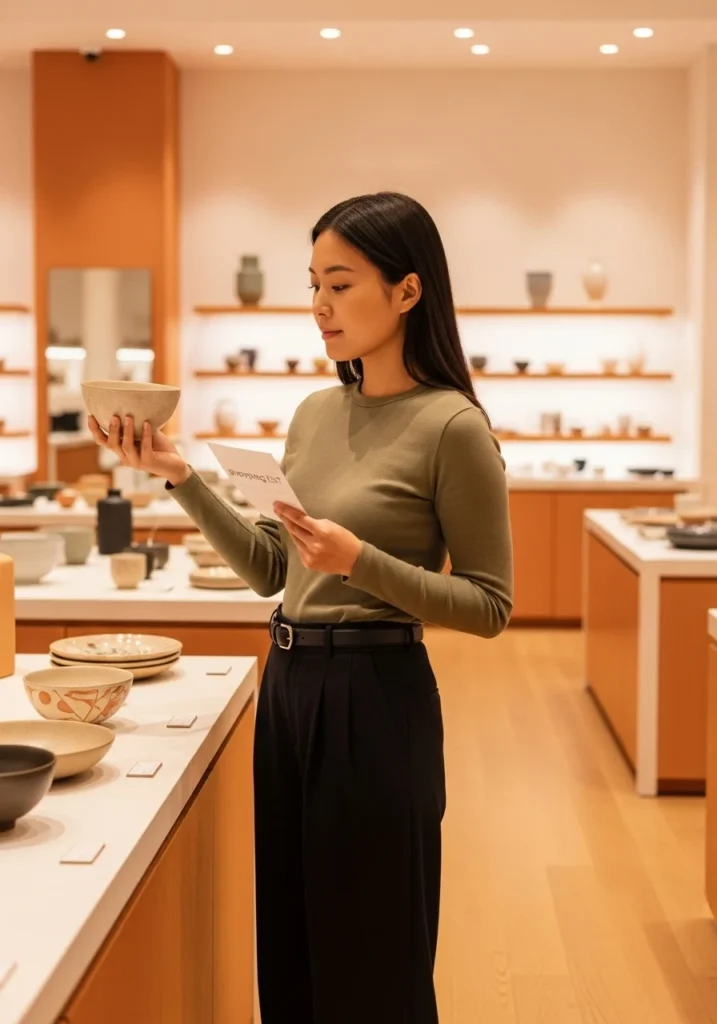
Minimalism and Mental Health
Minimalism isn’t just about creating a clean home—it’s also about cultivating a healthier, more peaceful mind. The connection between your environment and your mental well-being is deeper than many people realize. In fact, research has shown that cluttered and chaotic surroundings can elevate stress hormones, contribute to anxiety, and negatively impact your focus and mood. That’s where minimalism becomes a powerful tool—not only for your physical space but also for your mental health.
When you reduce the excess in your surroundings, you also reduce the mental noise that comes with it. A clean, well-organized space can immediately calm the nervous system, helping your brain feel more in control and less overwhelmed. You’re no longer visually bombarded with piles of paperwork, overflowing drawers, or unfinished projects. Instead, you’re surrounded by simplicity, intention, and order—all of which promote mental clarity and emotional balance.
Decluttering Your Space = Decluttering Your Mind
Have you ever tried to focus in a messy room? It’s difficult because your brain subconsciously registers every item in your field of vision as something to process. When your home is clean and uncluttered, your mind can rest. Tasks feel more manageable, stress is reduced, and you experience a greater sense of control over your life. Minimalism creates the conditions for calm and focus, which are essential for good mental health.
Letting Go of Emotional Clutter
Minimalism also goes beyond the physical. It encourages you to let go of emotional and psychological clutter—things that weigh heavily on your mind and spirit. This might include:
- Toxic relationships that drain your energy or create emotional chaos.
- Negative thought patterns like self-criticism, guilt, or fear of missing out.
- Unproductive habits that steal your time and attention, like mindless scrolling or overcommitting to things that don’t serve you.
By removing these mental and emotional distractions, you create more space for peace, self-care, and purposeful living. You start making choices based on clarity rather than chaos.
A Supportive Daily Environment
A minimalist lifestyle also supports mental wellness through intentional design. When your home is arranged in a way that supports relaxation, focus, and ease of movement, you feel more grounded and less reactive. Minimalist spaces are calming by nature—free of visual clutter, noise, and overstimulation. This allows your mind to settle, your creativity to flourish, and your stress levels to drop.
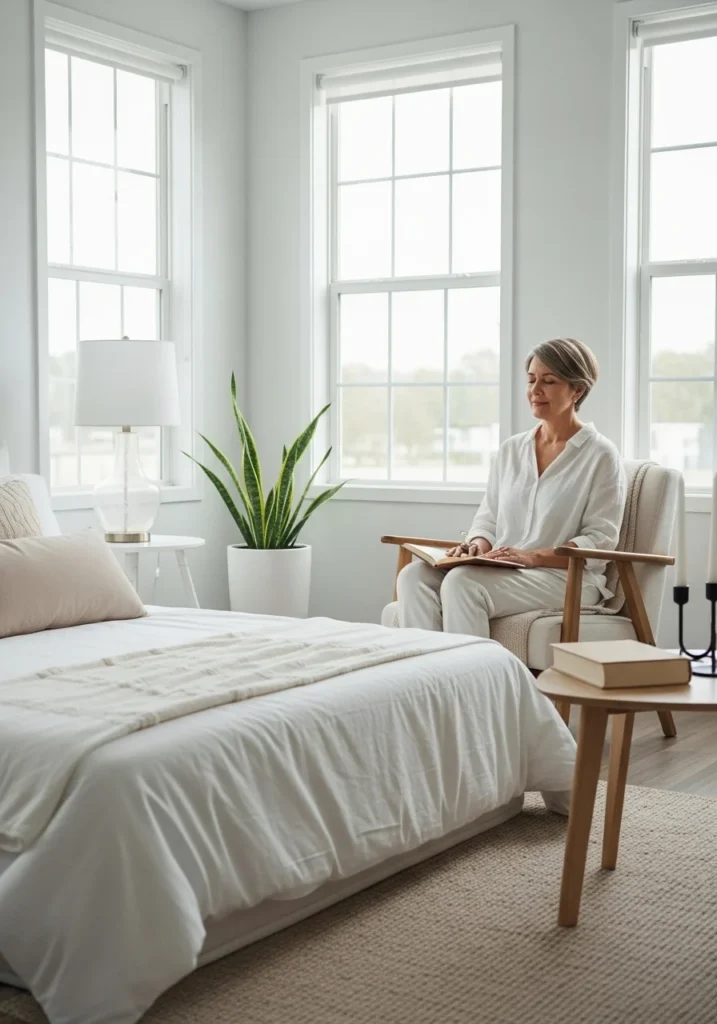
Digital Minimalism
In an age where smartphones, laptops, and endless notifications dominate our daily lives, digital minimalism is more important than ever. Just like physical clutter, digital clutter can weigh heavily on your mind, reduce productivity, and drain your emotional energy. If you’ve ever felt mentally exhausted after scrolling through endless feeds, overwhelmed by your overflowing inbox, or frustrated by constant app alerts, you’re not alone. Digital minimalism offers a refreshing solution: simplifying your digital world so you can regain focus, time, and peace of mind.
What Is Digital Minimalism?
Digital minimalism is the intentional practice of reducing your online distractions and curating your digital environment so that it supports—not competes with—your real-life goals and values. It’s not about deleting everything or going off-grid; it’s about using technology on your terms, rather than letting it control you.
Here are practical ways to embrace digital minimalism and reclaim your time:
1. Unsubscribe from Unread Newsletters and Spam
Email overload is a daily source of stress for many people. Unsubscribing from newsletters you never open or promotional emails you don’t need is a quick and easy win. Tools like Unroll.Me or Gmail filters can help streamline this process, turning your inbox into a calm, purposeful space instead of a chaotic to-do list.
2. Limit Social Media Usage
While social media has its benefits, it can also become a major time and energy drain. Set specific times during the day when you check social media, and stick to them. Turning off auto-login features or deleting apps temporarily can also help break the habit of endless scrolling. Use your reclaimed time for things that nourish you—like reading, exercising, or spending time with loved ones.
3. Delete Unused Apps
Go through your phone and delete any apps you haven’t used in the past month. Many of us download apps for one-time use or during trends, and then forget about them. These unused apps take up space and create visual clutter, making it harder to find what’s actually useful. By reducing app overload, your device becomes cleaner, faster, and more enjoyable to use.
4. Turn Off Non-Essential Notifications
Notifications are constant interruptions that pull your focus away from the present moment. Review your settings and turn off alerts for apps that aren’t critical. You’ll be amazed at how peaceful your day feels without pings for every email, sale, or social media mention.
5. Organize Your Digital Files
Just like a messy desk, disorganized digital files can slow you down and increase stress. Create clear folders on your devices and in cloud storage to organize photos, documents, and downloads. Regularly back up your files and remove duplicates. A tidy digital space saves time, prevents frustration, and makes important information easier to access.
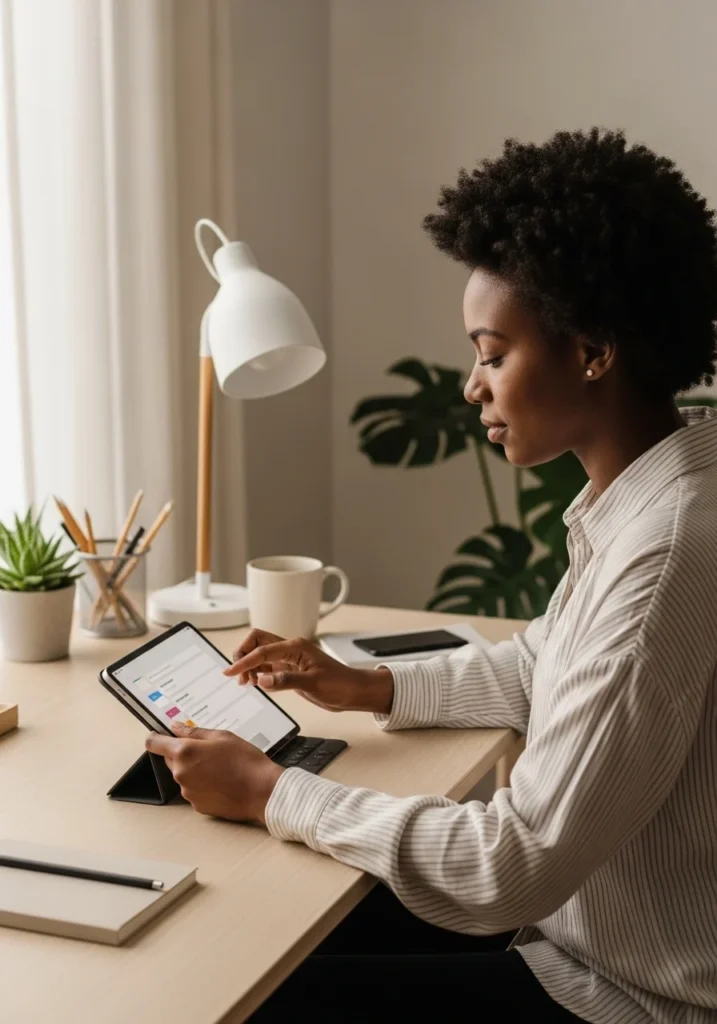
Living a Minimalist Life With Family
Contrary to popular belief, minimalism isn’t just for singles, couples, or empty nesters—it can thrive beautifully within families too. While living minimally with children may require more communication and flexibility, the rewards are well worth the effort. A minimalist family lifestyle promotes more intentional living, stronger relationships, and greater appreciation for what truly matters. It’s about teaching your children not just how to live with less, but how to live better.
Raising a family in a minimalist home doesn’t mean depriving your children or stripping away their favorite things. Instead, it means creating an environment where clarity, purpose, and connection come first—and where everything in the home serves a role in supporting the family’s well-being and values.
Set Boundaries for Toys and Clothes
One of the biggest challenges for minimalist families is managing the influx of toys, clothes, and “stuff.” Birthday parties, holidays, and well-meaning relatives can lead to overflowing toy boxes and closets. Setting clear boundaries—for example, a designated toy bin or clothing limit per child—helps keep possessions manageable. Rotate toys regularly instead of keeping everything out at once. This keeps things fresh and reduces overwhelm for both kids and parents.
Involve Children in Decluttering Decisions
Minimalism is a mindset that can be taught early on. Rather than throwing away your kids’ things when they’re not looking, include them in the process. Ask them what toys they love, what clothes they wear often, and what they might be ready to pass on to another child. Giving them a voice empowers them, fosters independence, and teaches empathy and generosity.
Focus on Experiences, Not Things
Minimalist families prioritize connection over consumption. Instead of piling on more toys or gadgets, create lasting memories through simple, meaningful experiences—like nature walks, cooking together, game nights, movie marathons, or DIY arts and crafts. Experiences foster stronger bonds and help children understand that joy doesn’t come from owning more, but from doing more together.
Model Minimalist Behavior
Children learn by example, so one of the most powerful ways to raise minimalist-minded kids is to live the lifestyle yourself. Let them see you decluttering your belongings, making mindful shopping choices, and expressing gratitude for what you have. Show them that happiness doesn’t depend on owning the latest trend, but on living a life of intention, purpose, and balance.
The Benefits of Minimalism for Families
Living minimally as a family leads to a calmer, more organized home and nurtures gratitude, creativity, and responsibility in children. With fewer toys and distractions, kids are more likely to engage in imaginative play, problem-solving, and quality time with loved ones. It also reduces family stress and decision fatigue, making everyday routines simpler and more harmonious.
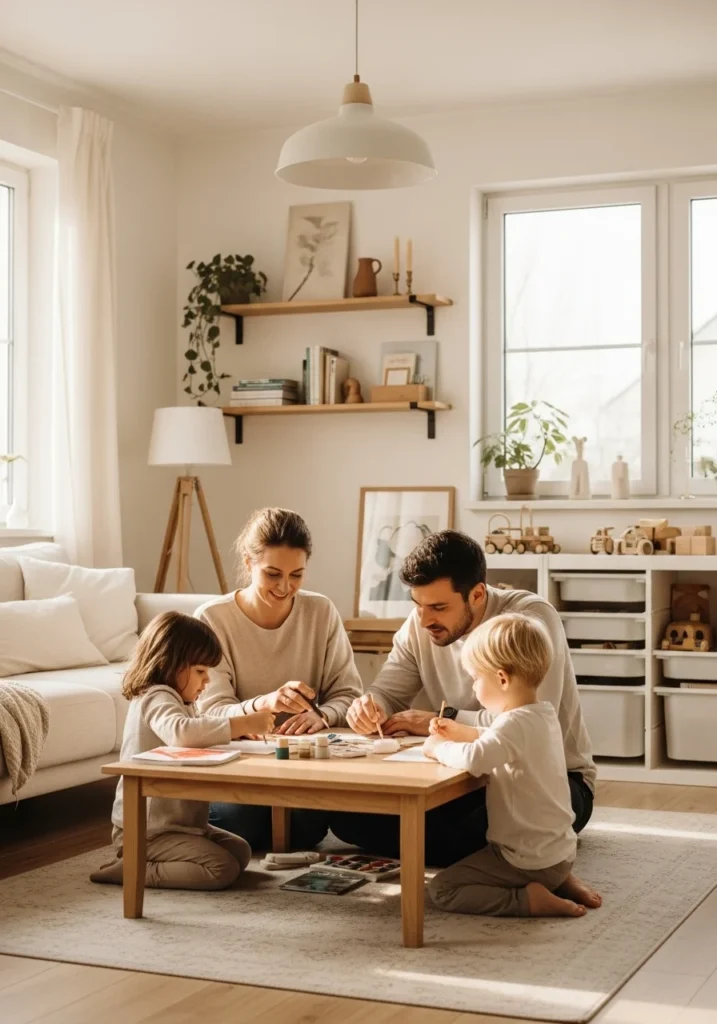
Common Mistakes to Avoid
While the minimalist lifestyle offers numerous benefits—clarity, peace, space, and freedom—it’s easy to fall into certain traps, especially when you’re just starting out. Many people approach minimalism with enthusiasm, only to feel overwhelmed or discouraged when the results don’t match their expectations. That’s why it’s important to understand the common mistakes to avoid on your minimalist journey. By being aware of these pitfalls, you can create a simpler, more intentional life with less stress and more success.
1. Going Too Fast
One of the biggest mistakes new minimalists make is trying to do too much, too quickly. Inspired by decluttering shows or minimalist influencers, you might feel tempted to overhaul your entire home in a weekend. But real, lasting change comes from moving intentionally, not impulsively. Minimalism isn’t a race—it’s a personal process of discovery and alignment. Going too fast can lead to burnout, regret over discarded items, or missed opportunities to reflect on what truly matters.
2. Comparing Yourself to Others
Minimalism doesn’t look the same for everyone, and it’s important to remember that. Some people may live with only 100 items; others may have a cozy, well-furnished home with a minimalist mindset. Comparison steals joy and creates unrealistic standards. Your version of minimalism should reflect your lifestyle, values, and needs—not someone else’s aesthetic on social media. The goal is not perfection—it’s progress and peace.
3. Being Too Rigid
Minimalism is about intentionality, not restriction. Another common mistake is becoming too strict or inflexible—feeling like you have to throw away beloved keepsakes or live without comfort. In reality, it’s perfectly okay to keep things you love, use regularly, or that bring you joy. The key is to make thoughtful decisions, not to deprive yourself. Minimalism should feel liberating, not limiting.
4. Neglecting Your “Why”
Losing sight of your original motivation is another pitfall that can derail your journey. Minimalism isn’t about having less for the sake of it—it’s about creating space for what matters most. Whether your “why” is to reduce stress, be more present with your family, save money, or improve mental clarity, stay connected to it. Revisit your purpose often. It will help guide your choices and keep you grounded when the process feels challenging.
5. Throwing Things Away Carelessly
In the rush to declutter, many people toss things in the trash without considering the environmental impact. Minimalism and sustainability often go hand-in-hand. Be mindful of how you discard your items—donate, recycle, or repurpose whenever possible. Not only does this reduce waste, but it also helps others and aligns your minimalist journey with greater social responsibility.
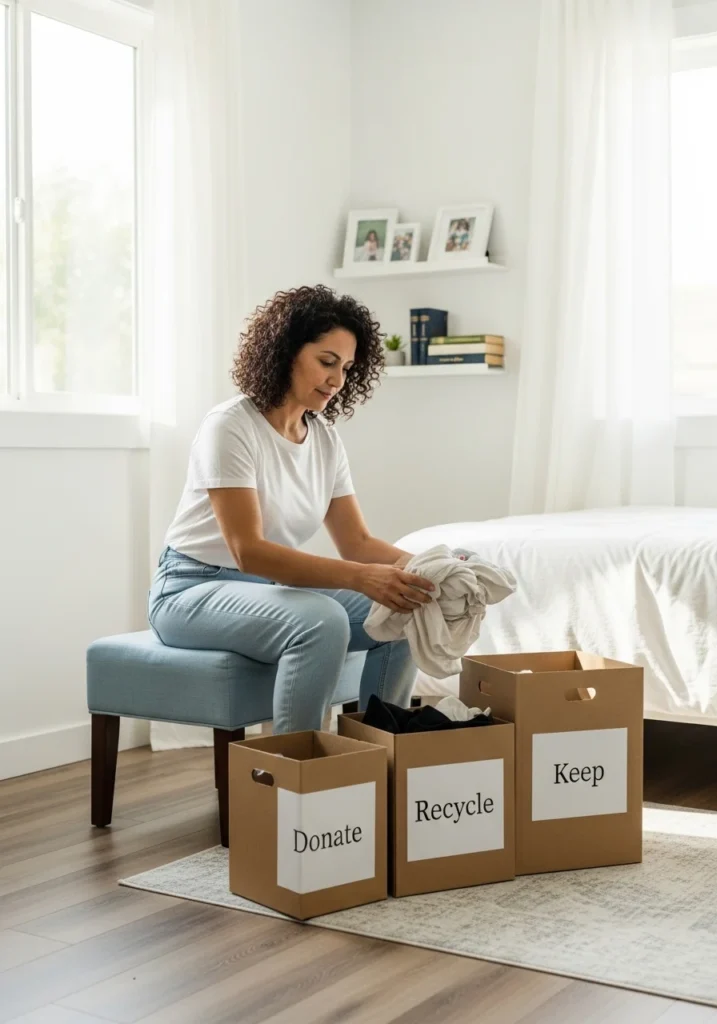
Final Thoughts
As you reach the end of your minimalist journey—or perhaps just the beginning—it’s important to reflect on what minimalism truly represents. It’s not about harsh limits, cold interiors, or owning as little as possible. Minimalist living is about creating a life filled with meaning, clarity, and purpose. It’s about letting go of the excess that weighs you down—physically, mentally, emotionally—and making room for everything that truly matters.
When you strip away the clutter, you start to see life more clearly. You notice the beauty in simplicity, the joy in everyday moments, and the peace that comes from having space—both in your home and in your mind. Minimalism allows you to focus on what you love most: time with family, creative pursuits, rest, nature, connection, and personal growth. It’s a lifestyle that frees you from distractions and brings you closer to your values.
You don’t have to change everything overnight. In fact, some of the most powerful transformations come from small, steady steps: decluttering a single drawer, saying no to a purchase you don’t truly need, or setting boundaries around your time. Minimalism isn’t a destination—it’s a mindset and a way of life that evolves with you.
By embracing minimalism, you begin to experience a sense of lightness, freedom, and control. You make space not only in your closets and calendar but also in your heart and mind. Life becomes less about what you own and more about who you are and how you live.
So whether you’re simplifying your schedule, reducing digital distractions, or reorganizing your home, remember this: Every step you take toward minimalism is a step toward greater peace, purpose, and joy. Let go of perfection. Focus on progress. And above all, enjoy the freedom that comes with living simply and intentionally.
